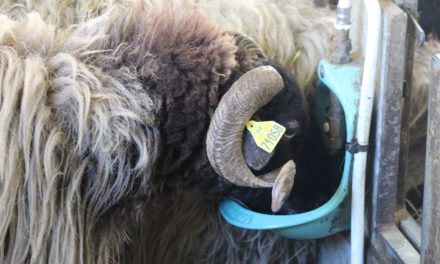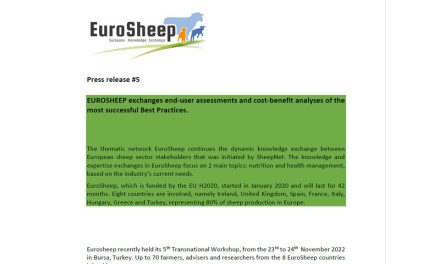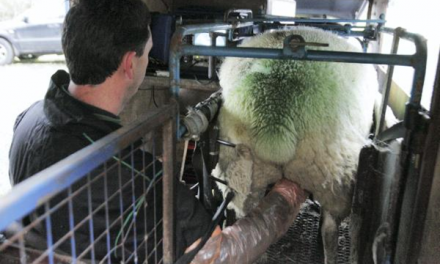This post is also available in:
![]()
![]()
![]()
![]()
![]()
Aminoacid Nutrition
Factsheet name: Aminoacid nutrition
Need / Issue: Protein concentration in the diet (concentrate + forage)
Introduction:
In sheep and goats, amino acid nutrition is essential for the maintenance of health and productivity. Management of amino acids in sheep nutrition and production has two major aims – achieving genetic potential for productivity and maintaining good animal health (Liu and Masters 2000, 2003). The sheep industry supplies meat, milk and wool, and the rates of protein retention in these products is a dominant factor in productivity. Therefore, the management of amino acid nutrition for these productive processes aims at increasing, as much as possible, protein synthesis in the mammary gland and in the wool follicle, and protein retention in body weight gain –the difference between protein synthesis and breakdown (Wu 2018).
General considerations in amino acid nutrition
Dietary proteins are digested in the GIT and the resulting amino acids are absorbed into the body and transported to sites of protein synthesis to meet the requirements of the animal. In farm animals, the quality and quantity of dietary protein are usually referred to as ‘profiles’ (proportions of individual amino acids to the total amino acids or total protein) and as the amounts of essential amino acids entering the small intestine. In ruminants, in contrast to monogastric animals, dietary protein is degraded by rumen microorganisms to ammonia, amino acids and peptides that the microorganisms then use as nitrogen sources to support their own growth (Wu 2018). Most dietary protein is degraded by the rumen microorganisms and used by those microbes as a source of nitrogen to synthesize their proteins, and this microbial protein enters the small intestine and is used by the host (Agricultural Research Council 1984), but some dietary protein can escape ruminal degradation. As a consequence, the amino acid profile of the ruminal microbial protein is used as an approximation of the profile available to the host, unless the dietary protein has been processed to enhance its rumen by-pass rate.
In farm animals, the primary purpose of the management of amino acid nutrition is to match the profile of amino acids, essential amino acids in particular, in the protein flowing into the small intestine [i.e., metabolizable proteins (MP) in ruminants)] with the amino acid profile of the products. This management is based on an assumption that the body does not need to modify the amino acid profile in MP in de novo protein synthesis because any such modification will lower the efficiency of utilization of dietary amino acids. To determine this supply-demand relationship, a basic strategy is to compare the amino acid profiles in MP with those in animal products. If the amount of an essential amino acid in ruminal microbial protein is much lower than the amount in the product protein, it is likely the dietary supply of this amino acid will not meet the demand of the body.
Amino acid nutrition during lactation
The supply of amino acids is important because they are involved in synthesis of milk proteins as well as the proliferation and function of the mammary cells. Protected amino acids have been used in lactating ewes to increase milk production during suckling (Lynch et al., 1991; Baldwin et al., 1993) or milking periods (Bocquier et al., 1994). Lynch et al. (1991) studied the supplementation with Methionine (0.11%) and Lysine (0.28%) of two concentrates for suckling ewes varying in its level of protein (10 and 16% crude protein). The results obtained indicated a higher milk yield (+11%) in the ewes fed with the high protein supplemented concentrate, but the difference was not significant. Milk protein was also unaffected by both experimental treatments. The inclusion of protected Methionine (0.2%) in the concentrate produced small (+2%) and not significant increases in milk yield and milk protein as observed by Baldwin et al. (1993) in suckling Dorset ewes. It has been also shown that the milk protein content of milk can be increased by the addition of 3 or 6 g/d of protected Methionine at the start of milking period in Lacaune dairy ewes (Bocquier et al., 1994). Ewes were in positive nutrient balance (117-120% and 120-140% of energy and protein requirements, respectively). The response to Methionine was higher when basal diet was based in silage than in hay, indicating that Methionine content could be the limiting amino acid in this last diet. Milk yield and milk fat content were unaffected by the supplementation.
Implications
There does not seem to be any ‘limiting’ amino acids during lactation in sheep. The amino acid profiles are very similar for milk and the rumen microbes, so microbial protein seems to match the requirements for synthesis of milk protein without substantial modification. If protected proteins are willing to be given, this must be only at early lactation when requirements are not easy to reach.
Topic: nutrition
Production: Dairy / Meat
Animal Category: ewe







